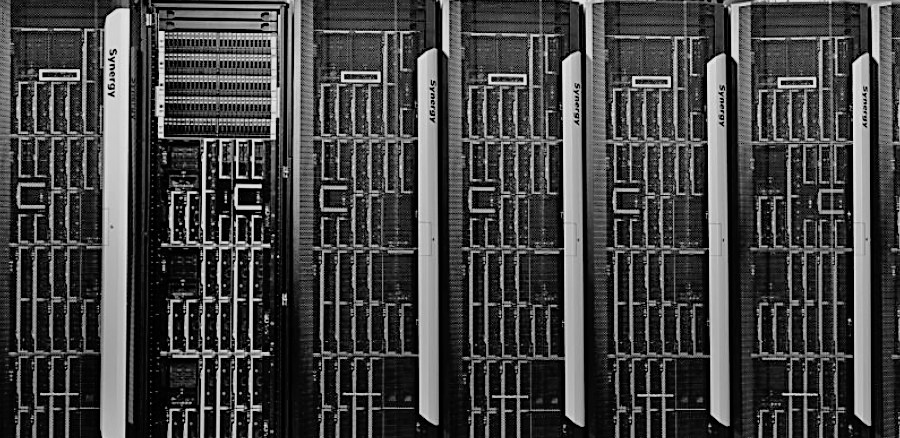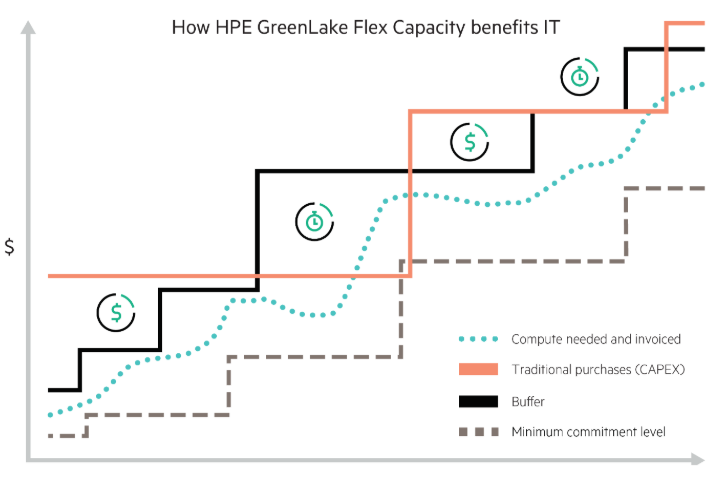
Hewlett Packard Enterprise has been aggressive in extending the tentacles of its GreenLake cloud-like IT consumption model since announcing the technology in mid-2018. Over the past 15 months or so, the giant tech vendor has stretched out into the public cloud via a collaboration with Google Cloud Platform through validated designs for hybrid clouds and offering a hybrid cloud for containers that can be delivered as a service through GreenLake.
HPE also in June unveiled an initiative to bring the consumption-based model to the midmarket and SMB space, including through preconfigured offerings that include compute, networking, storage, virtualization and software and based on the company’s SimpliVity infrastructure. Another part of the plan is to make GreenLake available to smaller businesses through Equinix and CyrusOne colocation firms, which can run GreenLake in their own datacenters. HPE also unveiled tools to make it easier for the channel – an important avenue for bringing GreenLake to enterprises that are not immense but still large – to sell GreenLake services.
The edge also is in play, with HPE offering a new network-as-a-service on GreenLake based on a range of networking offerings from the company’s Aruba Networks business, including WiFi, edge switching, and analytics.
At the HPE Discover show in June, the company announced an ambitious plan to deliver its entire portfolio as a service by 2022, essentially letting customers decide whether to pay for HPE products as they have for years or through the GreenLake model, paying only for the resources they use. To do that, the company will have to continue to expand the reach of GreenLake not only throughout its own product lineup but also into new markets and through its technology and channel partners.
At the VMworld 2019 show this week in San Francisco – an event where cloud took center stage – HPE took another step in that direction, announcing a partnership with VMware to integrate GreenLake and HPE’s Synergy composable infrastructure with VMware Cloud Foundation, an integrated cloud infrastructure that brings together compute, storage, networking, security and cloud management that enables enterprises to run workloads in both private and public clouds, such as Amazon Web Services (AWS), Microsoft Azure and Google Cloud.
Now the tens of thousands of joint HPE-VMware customers can run VMware Cloud Foundation as a service on GreenLake. It’s illustrative of a core tenet of the everything-as-a-service-by-2022 push by HPE, that the effort will need to include technology partners as well, according to Paul Miller, vice president of marketing for converged data center infrastructure at HPE.
“It’s not only about our portfolio, but how we partner with our partners to deliver their technology also as a service,” Miller tells The Next Platform. “What we’ve been hearing from customers is they want the cloud experience with the cloud economics, the cloud agility, all that goodness delivered in their own datacenter. That’s what we have teamed with VMware to deliver. This is built on Synergy, which takes the value even higher. This is a fully managed hybrid cloud environment, so on premises and, if a customer uses [VMware] Cloud Foundation, we go to their favorite cloud. That really delivers a managed environment that we continually optimize and do the heavy lift for customers of managing the infrastructure, the software stack, etc.”
That’s what is driving the GreenLake effort, the idea of giving organizations a cloud-like experience that includes greater flexibility and agility, lower costs, paying for only what is used and not over-provisioning to cover spikes in demand, and having someone else worry deploying and managing the environment. In the case of VMware Cloud Foundation, enterprises can shift 40 percent of what they would normally spend on infrastructure purchasing and management to innovation, R&D and building products and services for customers, he says. It also drives down the total cost of ownership by 30 percent, with organizations leveraging Synergy to spin up and down resources based on demand.
GreenLake, which is under HPEs PointNext enterprises services unit, also comes from the realization that not every workload will run in the cloud. For various reasons, from the cost of reprogramming applications for the cloud or moving them between clouds to compliance or data protection issues, the world is settling into hybrid clouds. GreenLake is designed to enable IT environments that include both public clouds and on-premises infrastructures.
“I spend 50 percent of my time with customers and they are telling me at their scale of production workloads, it is cheaper for them to run it on-prem than off-prem,” HPE president and chief executive officer Antonio Neri said during a conference call this week to talk about the company’s fiscal Q3 financial results, which we covered separately here. “That said, they will put workloads in both places. And last but not least is the fact that they want to consume more and more as a service, and that’s the new reality.”
GreenLake isn’t HPE’s initial foray into consumption-like models. With Flex Capacity over the past decade, the company has enabled enterprises to pay for some ProLiant servers on a subscription basis. And it’s not the only vendor looking to give customers options on paying for technology. For example, Dell EMC has its own Flex on Demand infrastructure consumption services. However, GreenLake is gaining some momentum, according to HPE. The vendor has $2.5 billion under contract for GreenLake, with more than 600 customers. Orders in the most recent quarter were up 10 percent and the renewal rate is at 99 percent.
The opportunity for joint HPE and VMware customers is significant, Miller says.
“A lot of customers are telling us they can’t afford to re-platform, refactor and retool their current environment to go to the public cloud,” he says. “The expense of doing that is too much. With this solution, they get the cloud economics, they get to free up the resources, get this continually optimized environment where they’re only paying for the VMs [virtual machines] they use without having to change anything. Their existing environment, their existing tools, their data all stays in place and … that is one of the biggest values they see. They get the benefits of cloud without the expense of having to do any of that heavy lift on the application or data side. This as a big step forward for a large installed customer base today, whether it be HPE platforms or other platforms. We’re going to be aggressively taking this to market.”
HPE is running GreenLake on a variety of platforms, including SimpliVity and Superdome, Miller says. However, Synergy remains the core infrastructure for GreenLake.
“It enables customers to interface through the API – as we call it, infrastructure-as-code – to help them quickly deploy their workloads and applications,” he says. “Synergy provides a great economic base for us. When we think about moving into an as-a-service world, this unique IP, like Cloud Cruiser in GreenLake – which enables us to get this granularity of metering – but then building on Synergy, which allows the fluid resource pools to quickly spin up and spin down through a self-service model. Also, the efficiencies of Synergy [and] the ability to scale dynamically are extremely appealing. It is one of the foundational building blocks of our of our GreenLake offering.”
GreenLake’s metering and capacity management means the resources needed for workloads can deploy in minutes rather than months, cutting the amount of time to launch global IT products by 65 percent, according to HPE. Another tool, Right Mix Advisory, helps customers determine which workloads should move to the public cloud – and how best to migrate them – and which should remain on premises.






Be the first to comment